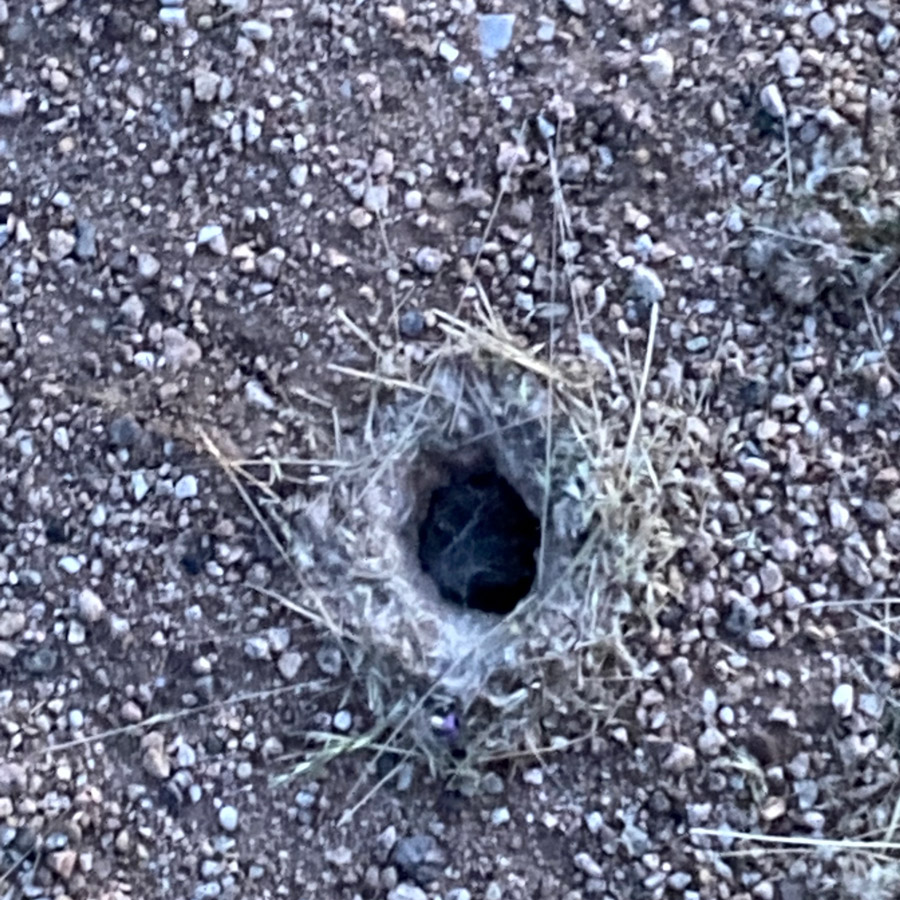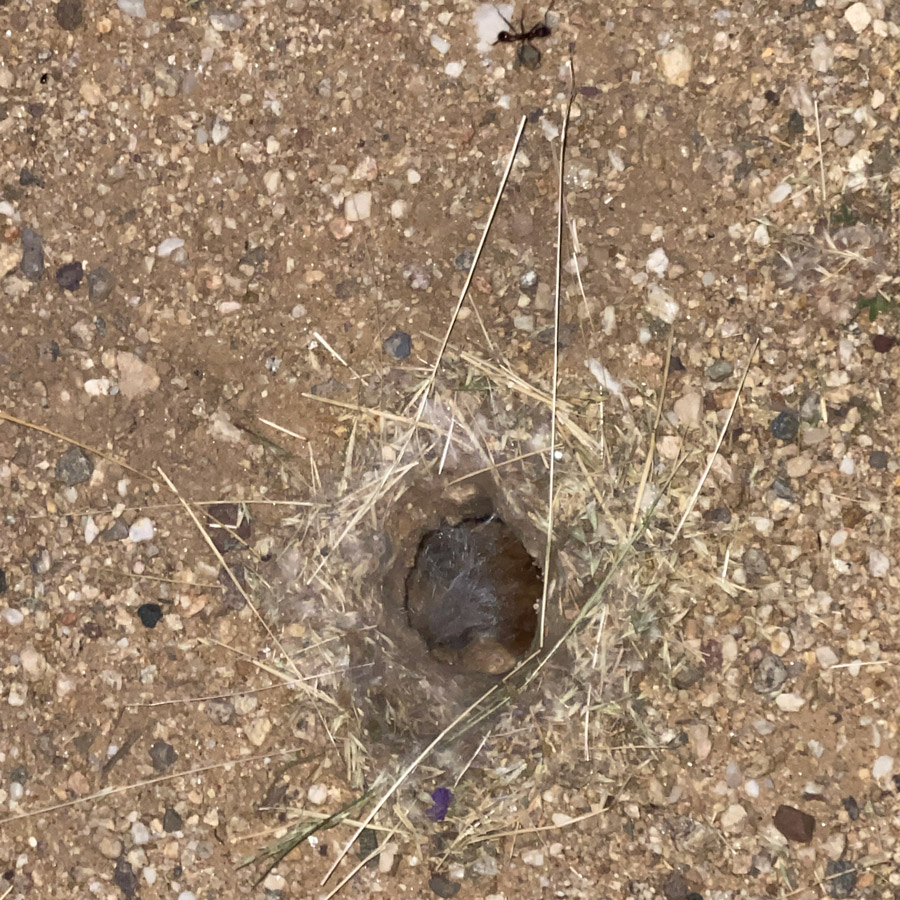I was taking Max, my dog, for a walk one evening. The setting sun illuminated a new hole in my dirt driveway. The hole was surrounded by something that glistened in the angled sun. When I got near, I saw that the opening was covered with what looked like spider silk.

Digging into the Mystery
I first thought it might be a trapdoor spider, but it didn’t have the appropriate covering. Off I went to the iNaturalist app and discovered that I had a Desert Blond Tarantula, Aphonopelma chalcodes, living in my driveway.


Since this burrow wasn’t dug under stones, I suspected it was a discarded round-tailed ground squirrel hole. How do tarantulas dig holes? The eight legs are very spindly and don’t have sizeable claws to scrape into the ground. Incredibly, they use their fangs to dig themselves a home underground. Amazing. I wonder if this helps keep their fangs nice and sharp or if it dulls them, grinding away in the hard desert soil. Fortunately, their fangs can grow back if they are damaged.
After all, they need those fangs for subduing their prey: lizards, crickets, beetles, grasshoppers, cicadas (this is a good year for them!), and caterpillars.
These desert blond tarantulas, it turns out, are not in a hurry to grow up. They don’t reach sexual maturity until they are 8-10 years old, a significant span in insect years. But it’s the females that truly amaze me. They can continue to molt, shedding their exoskeleton, for up to 20 years. In the wild, they may not live that long, but in captivity, they can extend their lifespan even further. This longevity is a testament to their resilience and adaptability in the harsh desert environment.
Tarantulas are touchy-feely. Since they don’t utter sounds and have poor eyesight, these spiders communicate with each other and the outside world by touch.
Desert Blonds are 3-4 inches long. The females are a uniform tan, which is the source of the common name. The males, however, are much more colorful: black legs, copper-colored thorax, and reddish abdomen. They prefer the saguaro-based ecosystem, where they hunt at night near their dens.
When it’s time to mate, the males leave their neighborhoods to search for a mate. When a male finds a female’s burrow, he strokes the silk “door.” Using specific tapping, he entices her to his embrace. Females live on to produce offspring for several years, but males usually die young. Males might be eaten by their mate, picked off by a predator, or succumb to the harsh desert environment.
I don’t know which sex I have in my driveway. Maybe come hatching time, I’ll see some baby tarantulas disperse. I’d be delighted if they chose to dig their homes near my home.

You can learn more about the animals of the Sonoran Desert in my many children’s books and educational workbooks on the topic!
